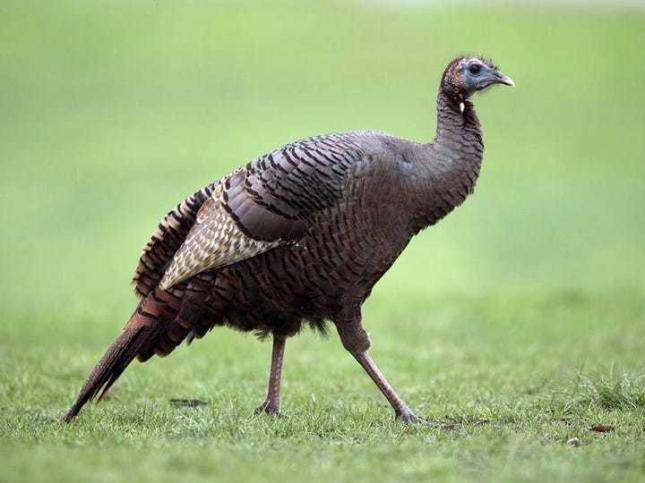Fun Facts About Wild Turkeys
- Most North American kids learn turkey identification early, by tracing outlines of their hands to make Thanksgiving cards. These big, spectacular birds are an increasingly common sight the rest of the year, too, as flocks stride around woods and clearings like miniature dinosaurs. Courting males puff themselves into feathery balls and fill the air with exuberant gobbling. The Wild Turkey’s popularity at the table led to a drastic decline in numbers, but they have recovered and now occur in every state except Alaska
- The Wild Turkey and the Muscovy Duck are the only two domesticated birds native to the New World.
- Wild Turkeys eat plant matter that they forage for in flocks, mostly on the ground but sometimes climbing into shrubs or low trees for fruits. In fall, winter, and early spring they scratch the forest floor for acorns from red oak, white oak, chestnut oak, and black oak, along with American beech nuts, pecans, hickory nuts, wild black cherries, white ash seeds, and other seeds and berries. When deep snow covers the ground, they eat hemlock buds, evergreen ferns, spore-covered fronds of sensitive ferns, club mosses, and burdock. In late spring and summer Wild Turkeys occasionally supplement their plant diet with salamanders, snails, ground beetles, and other insects. Like most birds they swallow grit to help digest their food.
- Wild Turkeys get around mostly by walking, though they can also run and fly—when threatened, females tend to fly while males tend to run.
- At sundown turkeys fly into the lower limbs of trees and move upward from limb to limb to a high roost spot. They usually roost in flocks, but sometimes individually.
- Courting males gobble to attract females and warn competing males. They display for females by strutting with their tails fanned, wings lowered, while making nonvocal hums and chump sounds. Males breed with multiple mates and form all-male flocks outside of the breeding season, leaving the chick-rearing to the females, The chicks travel in a family group with their mother, often combining with other family groups to form large flocks of young turkeys accompanied by two or more adult females.



